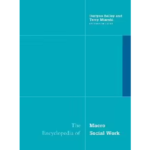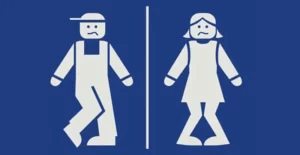ABSTRACT: The administration of socialist mayor Bernard Sanders of Burlington, Vermont (1981-1989) has had a major impact on the quality of life in the city. Based on an analysis of the Mayor’s YouthOffice, the Mayor’s Council on the Art, and the Burlington Women’s
Council, the author concludes thatinnovative and expanded social welfare programming is possible when you have a progressively orientedadministrating at the municipal level.
Bernard Sanders, the socialist mayor of Burlington, Vermont (population 38,000), finished eight years in office as of March 1989. When Sanders won an amazing ten-vote victory in 1981, few survived his first term in office, however, but went on to win decisive victories in three more mayoral races. And, running as an independent, Sanders almost won the 1988 Congressional race for Vermontr’s lone House seat and ran again in 1990. b
From 1980-1982, I served as the statewide organizer of the Vermont Alliance, a citizens” action group of low and moderate-income people. With fascination, I watched Sanders” rise to power. The Vermont Alliance’s neighborhood groups in Burlington were tan-
Steven D. Soifer is Assistant Professor of Planned Social Change at the School of Social Work, University of Washington, Seattle WA, 98195. He was formerly Executive Director for two statewide Citizens” Action group, groups, the Vermont Alliance and South Dakota ACRON (Association of Community Organizations for Reform Now )
The author would like to thank Dick Wealthcare and Virginia Seneehal for reading and commenting on earlier drafts of this article.
Journa] of Progressive Human Services, Vol. 1(12) 1990
© 1990 by The Haworth Press, Inc., All rights reserved.
Page 1
| JOURNAL OF PROGRESSIVE HUMAN SERVICES |
genitally involved in Sanders’ first mayoral campaign, and two Vermont Alliance members were elected to the Burlington Board of Alders along with him,
The election of Vermont Alliance members to the Board of Alders and Sanders’ mayoral victory in 1981 (which completely surprised just about everyone at the time) epitomizes the use of electoral politics to effect social change and bring about a just society in the United States. Human service workers, who belong to a profession that is interested in achieving social justice for all, have much to learn from the Burlington experience.
Sanders voluntarily leaves office with a rich legacy behind him. He competently ran the local government, implemented innovative programs, championed working-class issues, and addressed foreign policy concerns. Rarely one to shy away from a good political fight, Sanders was a master politician. Yet he never distanced himself from his socialist roots, questioning the inequities of the U.S.’s social, economic, and political systems whenever and wherever he could.
Sanders” (1985a) own definition of socialism envisions a society where poverty is absolutely unnecessary, where international relations are not based on greed but on cooperation, [and] . . . where human beings can own the means of production and work together rather than having to work as semi-slaves to other people who can hire and fire.
My own definition of socialism is broader. Concern about class inequities is not enough. All other forms of oppression must also be confronted. Moreover, the process of how we bring about a socialist society is very important. Feminist process and participatory democracy must be part of our vision too.
Implementing socialism on the municipal level is difficult, if not impossible, to do. So what can a locally elected socialist realistically accomplish? States Sanders (1985b):
I think what socialists do and should do in local politics is precisely talk about the inability of local government to deal with problems because of what goes on [at] the national and state level.
Page 2
| Steven D. Soifer |
To some degree, Sanders was able to inject his socialist perspective into policy decisions at the municipal level. Various programs he and his administration promoted had some socialist or feminist aspects, though few, if any, combined the two. Three Sanders ni- tiatives of relevance to human service workers —the Mayor’s Youth Office, the Mayor’s Council on the Arts, and the Burlington Wom- en’s Council — will be examined to demonstrate the possibilities and limitations of a socialist administration and the impact on social services in Burlington.
MAYOR’STHE MAYOR’S COUNCIL ON THE ARTS YOUTH OFFICE
Sanders is not unusual in citing the disaffection of youth as a problem, but his unwavering commitment to programs designed by and for youth stands out. Jane Driscoll, coordinator of the Mayor’s Youth Office explained how it got started:
In 1981, when Bernie campaigned for office for the first time, he said that he felt that the youth were disenfranchised, that they weren’t represented, and that not enough was being done by the city of Burlington for the Young people in our city. He felt that that was the responsibility of the city government. (Driscoll, 1985)
Just a few days after he was elected, Sanders created “a task force on youth’ to address their needs. After several months of study, the task force recommended the establishment of a Youth Office as a top priority for the incoming administration. Sanders supported the report’s recommendations and urged Driscoll to approach the Burlington Board of Alders for support. The Board was receptive to the proposal and authorized *“an office, a desk, and a telephone. No money, we didn’t ask for money” (Driscoll, 1985).
During 1981, Driscoll and the Youth Office promoted a lot of recreational activities for youth “that didn’t cost anything” to show it was possible and that the programs could be self-sufficient. The guiding philosophy of the first year was to be a “credible and visible’’ force in the community (Driscoll, 1985). But the modest beginnings of the Youth Office should not be mistaken for a lack of vision, which Driscoll described as follows:
Page 3
| JOURNAL OF PROGRESSIVE HUMAN SERVICES |
The theory which guides the Youth Office is simple. We believe that in these difficult times, young people need help in developing a sense of belonging and a sense of involvement in their community. It is our view that kids turn to drugs, alcohol, and other self-destructive behavior only to fill 2 voids in their lives which occurs when they are unable to express their energies in creative and
fulfilling ways. We are attempting to provide our young people with affordable, accessible opportunities that develop competence, usefulness, and a sense of commitment. We are working to prevent delinquency by building neighborhoods and involving residents of all ages with each other in their community. (Annual Report, 1983, p. 56)
Since its beginnings, the Mayor’s Youth Office conducted a wide range of activities. The activities included an after-school program for aspiring young actors and actresses; an annual Kid’s Day fair; an annual Battle of the Band teen concert; the Building Understanding Between Seniors and Youth (BUSY) program: a nationally recognized tree planting program; a youth newspaper written and produced by young people themselves; the Burlington Youth Employment Program; a teen center planned, built, and run by teenagers; a little league baseball team in one of the city’s poorer neighborhoods; and International Peace Workcamps (Annual Reports, 1982-1989). These programs provide an opportunity for young people to have a stronger voice in their community.
One initiative stands out from all the others. During its 1983-1984 season, the Youth Office played an instrumental role in opening a private, non-profit daycare center in a city auditorium, Driscoll battled with the Board of Alders for six months before they consented to it. Even the daily newspaper editorialized against it. But her persistence paid off and the Burlington Children’s Space was opened in short order. There is space for sixty children, and a long waiting list (Driscoll, 1985).
The daycare center serves people from all class backgrounds but especially caters to low and moderate-income people. From its inception, the Board’s policy has been that half of the Center’s children should be from poor and working-class families. The daycare center is made affordable for all Burlingtonians by a sliding-scale
Page 4
| Steven D. Soifer |
fee. Parents” fees cover about 90 percent of the operating costs, and the other 10 percent comes from grants. Burlington also gives the daycare center a small break on the rent it pays for space leased from the city (Driscoll, 1985; Driscoll, 1990).
Driscoll (1985) feels that the daycare center is “the only social setting we’ve been able to really get through.” But is the provision of daycare really socialistic? Huck Gutman, a member of Burlington’s Progressive Coalition,’ thought so because “daycare programs . . . speak to. . . society’s obligations . . . to help people work and raise their children (Gutman, 1986). But John Varsames, a liberal Republican real estate developer in Burlington was wary of such interpretations:
You can make it [day care} a socialist issue if you choose to call that socialist, but the fact is it’s cheaper 10 get our kids into daycare and get single parents out working than it is to run around and put . . . those mothers or fathers on a welfare roll. – – So it’s a good commitment for the city to make, (Varsa-mes, 1986)
In 1988, the Mayor’s Youth Office was actively involved in sponsoring a city-wide effort called the “Child Care Initiative,” an attempt to set up a Child Care Development Fund that would have helped low and moderate-income people defray the costs of daycare with a $600,000 tax levy on business properties. The measure, however, was soundly defeated by the voters because of organized opposition from the business community and an unfounded fear by voters that somehow the measure would increase their taxes (Annual Report, 1988; Driscoll, 1990).
Driscoll (1985) looks back at the accomplishments of the Youth Office and believes the effects will be long-lasting:
You can make it (day care) a socialist issue if you choose to call that socialist, but the fact is it’s cheaper 10 get our kids into daycare and get single parents out working than it is to run around and put . . . those mothers or fathers on a welfare roll. – – So it’s a good commitment for the city to make, (Varsa-mes, 1986)
Page 5
| JOURNAL OF PROGRESSIVE HUMAN SERVICES |
What role has the Youth Office played in Burlington? The 1989 Annual Report sums it up nicely:
Since the Youth Office began in 1981, it has identified the gaps in youth services and has acted as a catalyst to precipitate an effective response. . . . [T]he Youth Office has [not] been primarily a direct service provider. In fact, the primary strength and intent of the Youth Office is to act as an advocate for youth, to effect changes in our society that benefit young people,
Are the Youth Office programs socialistic? The Youth Office engaged the talents and aspirations of a segment of the city’s youth and made a real difference in the quality of life for young people and the city as a whole. It has clearly addressed the problems faced by youth from low and moderate-income families. Youth Office leadership has been important on the issue of daycare, which has socialist implications for the way society deals with its children. If not socialistic, the efforts of the Youth Office are a fine example of how to build toward a more productive society that utilizes the capacities, skills, and talents of all its members, and tries to prevent problems before they start, Human service workers concerned with youth issues can draw lessons from the programmatic accomplishments of Burlington’s Youth Office. )
According to Driscoll (1985), the Youth Office was a major achievement of the Sanders administration, ‘Highly visible, highly effective, and uncontroversial,” the Youth Office helped contribute to Sanders” re-election. Not only did it accomplish a lot, but through its “Mom and Apple Pie” activities, the Youth Office proved that the administration did things—good things— for the city.
THE MAYOR’S COUNCIL ON THE ARTS
In 1985, the Mayor’s Council on the Arts won a “livability award” for the city of Burlington from the U.S. Conference of Mayors for its excellent work. Then, in 1988, the Council played a major role in getting Burlington designated by the U.S. Conference of Mayors as one of the two most livable cities in
Page 6
| Steven D. Soifer |
America with populations under 100,000 (Annual Reports, 1986 and 1988).
According to Doreen Kraft, executive director of the Mayor’s Council on the Arts from 1981-1985, the idea for the Arts Council came up shortly after Sanders” election when the mayor-elect observed that poor people were unable to enjoy art in Burlington because most events were 100 expensive. Sanders also pointed out that many artists had a difficult time performing because there was a lack of affordable performance sites (Kraft, 1985).
In response to Sanders” interest in making art events accessible to poor and working people, Kraft helped initiate the Mayor’s Council on the Arts. Very quickly, artists and the community expressed a great deal of enthusiasm. Among the first events organized were a free concert series in a city park, a successful waterfront festival, and local neighborhood festivals. The Ars Council also set up a municipal art gallery in City Hall, where it sponsored such contro- version exhibits as a show by the Artists for Nuclear Disarmament, which “stirred a lot of people up [about] politics and the Arts Coun. cil” and in its second year, 2 Hiroshima exhibit (Kraft, 1985).
Another innovative program that year was the Community Arts program, created to assist “low-income people or underemployed artists whose projects reach out at the community level” (Annual Report, 1984, p. 89). The $7500 program, funded with Community Development Block Grant (CDBG) money, gave small grants to local artists in need. The Arts Council saw it “as something like the WPA [Works Progress Administration program of Franklin Delano Roosevelt], . . in which unemployed artists were paid to create (Green, 1983).
Over the next few Arts Council seasons, new events included the Discover Jazz Festival, the Nashfull Bash Country Music Festival, the Vermont Blues Festival, and the Senior Citizens Artas Program (which brought arts events to senior centers throughout the city). The Arts Council staged hundreds of events each year (many of which were free) attended by tens of thousands of people {Annual Reports, 1984-1989).
During the 1987-1988 aris season, a new addition to the Council’s repertoire was The Deep Focus Broadcast series, which engaged in alternative programming such as “films from Cuba, daily
Page 7
| JOURNAL OF PROGRESSIVE HUMAN SERVICES |
television fare from Nicaragua — including game shows, soap operas, and a sort of “Managua Vice” style cop show —and American documentaries on various topics relating to peace and nuclear war” (Annual Report, 1988, p. 103).
Regarding the Arts Council’s impact, there has been a “redefining [of] where art takes place . . . who art should be made for and [who art] should be given to” (Kraft, 1985). However, the arts’ relationship to radical change in a city like Burlington, Vermont is less clear:
I knew it wasn’t a matter of doing what’s possible in Nicaragua or Cuba or in other countries where the whole state and priorities are turned around so that they are giving major support and every arm of government is involved in that cultural change. But I think the Arts Council and the Youth Office especially were able to plant the seeds for people to see that there [exists] an equality between people in this society. The whole class question . . . was demonstrated most visually and most dramatically by the issues raised with the Arts Council (and the Youth Office} in terms of the haves and the have-nots. Although I don’t think there’s been a “‘radical’” transformation of local culture, it certainly has come a long way from where we began, when the only thing that was available in town was $18-$20 . . . tickets, and artists paying enormous fees for buildings, and always losing money and no money being given to low- income artists. (Kraft, 1985)
By most accounts, the Mayor”s Council on the Arts has been a huge success. It received praise from most quarters, including those that were often critical of the administration. Perhaps the most important accomplishment of the Arts Council has been to make art and culture accessible to people of all incomes. Clearly, the extent and diversity of the arts program in the city also has had some impact on the general consciousness of the population. Shows like the one on Hiroshima in City Hall, for instance, have raised people’s awareness of the effects of nuclear war. The Arts Council has done little, if anything, that can be directly labeled socialist, but it has unquestionably furthered efforts toward a
Page 8
| Steven D. Soifer |
new, more egalitarian society. As part of the public domain and no longer the exclusive privilege of the middle and upper classes in the city, the arts have become less of a commodity and more of something to be created and enjoyed by everyone.
The arts, and cultural work in general, are often overlooked by human service workers, yet they can have a profound effect on the quality of people’s lives and the public’s consciousness. Again, human service practitioners do have something to learn from the Burlington experience.
MAYOR’S COUNCIL ON WOMEN/ BURLINGTON WOMEN’S COUNCIL
The Mayor’s Council on Women, which changed its name to the Burlington Women’s Council in 1985, began as a task force shortly after Sanders was elected mayor in 1981. Peggy Luhrs, who was hired in August 1985 to coordinate the Council’s activities, provided an overall perspective on the dilemmas faced by the Council and why it did not experience the same kind of early success as its counterparts in the arts and with youth (Luhrs, 1985).
Luhrs (1985) said of her first interaction with the Council: “1 belonged 10 it— attempted to belong to it early on—but it didn’t [look] like the right organization for me at that time because of how disenchantment with the early Council:
I think it must have first started with a lot of women who were very involved with the Sanders campaign . . . . The very first meeting I went to . . . women had come in 2nd set themselves up at the Aldermen’s table and Bernie came in and said he didn’t like that, he wanted us all to sit at this long table, which we did, and [he] set himself up at the head. He later went into how . . . this was his Council, and he didn’t want independent stuff coming from it, it would all have to reflect his policies. It was the Mayor’s Council . . _ and so at that point, I felt . . . this wasn’t a place that I was going 10 want to work because I would want to have independent ideas. (Luhrs, 1985)
Page 9
| JOURNAL OF PROGRESSIVE HUMAN SERVICES |
During its first two years, the Council had no official leader or coordinator. Instead, it ran more like a cooperative. Perhaps because of this structure, the number of activities was limited. In 1981, the Council held a Women’s Health Day (Baley, 1981) in addition to sponsoring ““free health clinics at the Community Health Center (1982 Annual Report, P- 52). The Council also sponsored a seven-day event called “The Balancing Act: Women and Their Work’ (““Mayor’s Council,” 1982).
The Mayors Council on Women was restructured in 1983. This was an important step in the Council’s development and brought in an entirely new group of people, based on the decision that the Council should represent the diversity of women’s groups. The current Women’s Council has representatives from about 20 different women’s groups attending fairly regularly, plus anyone can come and be an at-large member. I think it’s been really rather amazing that we’ve got this range from radical lesbians to business and professional women and we work on a consensus model. (Luhrs, 1985)
After the Council’s reorganization, it began to work on many different projects. Women’s safety was a big concern, and the Whistlestop Program, the Women’s Self-Defense Project, and the Sexual Assault Prevention Program were developed. Women and economic issues were another priority area. So the Council had Job Fair Days, set up a Women for Economic Justice Committee which helped secure passage of an affirmative action ordinance requiring a certain percentage of women to be hired for federally funded trade jobs, and created the Women’s Consortium for the Construction of Housing. Numerous conferences on such topics as Women and the Law, War and Militarism, and Women Speakout Against Violence Against Women were held. Finally, the Council helped to dramatically increase the number of women appointed to city commissions (Annual Reports, 1983-1989; Luhrs, 1985: Adler 1985; Young-wood, 1985).
Luhrs (1985) perceived her role on the Council in the following way: “My priorities are really women and
Page 10
| Steven D. Soifer |
generally progressive politics, but from a . . . feminist point of view. I don’t trust capital-ism or socialism to take care of women.’ While Sanders was good
on the issue of daycare, when it came to “the feminization of poverty” or understanding the links between “socialism and workers and women,” he didn’t make the necessary connections (Luhrs,1985). The lack of funding in the early years was a reflection of the administration’s priorities. ““The Council wasn’t one of the major priorities in terms of Bernie’s personal interest. I think he was more interested in the Arts Council and the Youth Council happening (Luhrs, 1985). However, after the Council was reorganized in 1983, the Mayor moved from being “somewhat threatened” to being more open to women’s initiatives. In recent years, Sanders has played a generally positive role in helping the Council obtain funding from the city (Luhrs, 1985).
There haven’t been large political differences between the Sanders administration and the women’s community but tensions exist. In Luhrs’ (1985). view,
The kinds of things I would hear in the women’s community have to do more with style—have to do with the feeling of a rather unilateral decision-making style and that women’s issues aren’t going to be the first thing to come up in the administration. , . . There’s just a perception . . , “Yeah, socialism, but I seem to be the same sort of hierarchy with a man at the head.”
Jennie (Stoler) Versteeg, an economics professor at a local college, hit the mark by saying that Sanders’ primary focus on class analysis prevented him from taking women’s issues as seriously as he should. His orthodox Marxist position defines the struggles of women (and others) as secondary to the class struggle. However, Sanders has moved forward in his dealings with women and women’s issues, and this may ultimately influence his analysis (Versteeg, 1986).
Due to autonomy questions in relation to City Hall, the Burlington Women’s Council got off to a slow start. Since distancing itself from the Sanders administration, the Council has gained some momentum and is engaged in some important work. The separation of the Women’s Council from the Mayor’s
Page 10
| JOURNAL OF PROGRESSIVE HUMAN SERVICES |
the office may enhance its long-term survival.
The Women’s Council, more than the Youth and Arts Council, has raised important questions concerning the movement toward a democratic socialist society, The inherent contradictions between patriarchy and socialist feminism were made clear in the initial relations between Sanders and the Mayor’s Council on Women. While some of these issues were resolved, leading to the formation of the Burlington Women’s Council, some outstanding ones still remained. Thus, while there are many possibilities for women’s liberation under a socialist administration, in practice, in Burlington it has been difficult 10 attain.
Human service workers have much to learn from the experience of the Burlington Women’s Council. Attention to alternative programs designed for women, the degree to which they are supported by local government (including a socialist one), and the process by which they are implemented are all important considerations.
CONCLUSION
There is little doubt that the Sanders administration did much to improve the quality of life for Burlingtonians. In the arts and for youth, the Mayor has championed issues that have enriched many residents” lives. That Sanders had some extremely competent people 10 help him accomplish this does not diminish his personal contribution in this area.
Other efforts have met with more limited success or failure. Sanders” record with regard to women’s issues is mixed. Over time, he seems to have heightened his consciousness around women’s concerns. But there was little if any, change in process and decision-making issues within his administration,
Electoral politics can provide opportunities for progressive social change. While there was a retrenchment in social welfare programs on the national level during the Reagan years, innovative and expanded social welfare programming occurred on the municipal level in Burlington, Vermont. On youth and women’s issues and in the arts, Sanders” election allowed progressives to assume important leadership roles and to competently administer exciting new programs that made a real difference
Page 11
| Steven D. Soifer |
in many people’s lives. The Sanders administration created opportunities for innovative programming and implemented new, high-quality programs, often at little or no cost.
Quality of life concerns are very important when we consider the movement toward a feminist socialist society. while few of these accomplishments by the Sanders administration, in their own right, can be considered socialist, cumulatively they begin to challenge traditional cultural hegemony. Traditional assumptions about what youth are capable of, who the arts should be for, and how services should be provided to women were constantly questioned. Young people can be productive members of society; art can be made accessible to poor and working-class people; and women can decide for themselves what kinds of programs and services they would like to see in the community.
Socialist concerns are typically framed in economic and political terms, and pay less attention to the quality of the issues. The fact that the Sanders administration experimented with and broadened the scope of human service programs in Burlington is encouraging, for they must be on a democratic-socialist agenda if positive change in society is to be accomplished.
Human service workers can discover something about the possibilities of social service programs in a future democratic socialist U.S. society by studying the Burlington, Vermont experience. Involvement by human service workers in efforts to select progressive politicians to local (as well as state and national) officers can make an enormous difference in the quality and quantity of social services offered in the country.
NOTES
- To avoid the use of sexist language, I refer to Burlington’s Board of Aldermen as the Board of Alders in the text.
- I did my doctoral dissertation at the Heller Scholl, Brandeis University. on the Sanders administration, examining whether or not having a socialist mayor made a difference in the policies implemented by the administration. The dissertation, completed in 1988, is entitled Electoral Politics and Social Change: The Case of Burlington, Vermont. Dissertation Abstracts International, 49,2420A-2421A.(University Microfilms No. 88-19,289). It will be published as a book by Bergin and Garvey (a division of Praeger Publishers) and titled The Socialist Mayor: Bernard Sanders in Burlington, Vermont.
- I did my doctoral dissertation at the Heller Scholl, Brandeis University. on the Sanders administration, examining whether or not having a socialist mayor made a difference in the policies implemented by the administration. The dissertation, completed in 1988, is entitled Electoral Politics and Social Change: The Case of Burlington, Vermont. Dissertation Abstracts International, 49,2420A-2421A.(University Microfilms No. 88-19,289). It will be published as a book by Bergin and Garvey (a division of Praeger Publishers) and titled The Socialist Mayor: Bernard Sanders in Burlington, Vermont.
- The Burlington Progressive Coalition is the progressive electoral movement that formed around, the election of Bernie Sanders in 1981. As of March 1989, the Progressive Coalition had control of six out of the thirteen seats on the Board of Alders.
Page 12
REFERENCES
Adler, T. (1985, November 24). The conference discusses violence against women. The Burlington Free Press archives.
Baley, S. (1981, August 12). Women’s Council plans *‘health day.” The Burlington Free Press archives.
City of Burlington Vermont. (1982). 117th annual report for the year ending June 30, 1982. Burlington, VT: Author.
City of Burlington Vermont. (1983). 118th annual report for the year ending June 30, 1983. Burlington, VT: Author.
City of Burlington Vermont. (1984). 119th annual report for the year ending June 30, 1984. Burlington, VT: Author.
City of Burlington Vermont. (1985). 120th annual report for the year ending June 30, 1985. Burlington, VT: Author.
City of Burlington Vermont. (1986). 127th annual report for the year ending June 30, 1986. Burlington, VT: Author.
City of Burlington Vermont. (1987). 122nd annual report for the year ending June 30, 1987. Burlington, VT: Author.
City of Burlington Vermont. (1988). 123rd annual report for the year ending June 30, 1988. Burlington, VT: Author.
City of Burlington Vermont. (1989). Preliminary annual report for the year ending June 30, 1989. Burlington, VT: Author.
Driscoll, J. (1985, November 7). Interview with Jane Driscoll, director, Mayor’s Youth Office, Burlington, VT.
Driscoll, J. (1990, January 2). Phone interview with Jane O’Meara Sanders, director, Mayor™s Youth Office, Seattle, WA. (Driscoll married Bernard Sanders in 1988.)
Green, S. (1983, October 6). Burlington gets 2 city-sized WPA. The Burlington Free Press archives.
Gutman, H. (1986, February 3). Interview with Huck Gutman, Progressive Coalition member, English professor, University of Vermont, Burlington, VT.
Kraft, D. (1985, December 5). Interview with Doreen Kraft, former director, Mayor’s Council on the Arts, Burlington, VT.
Luhrs, P. (1985, December 12). Interview with Peggy Luhrs, the coordinator, Burlington Women’s Council, Burlington, VT.
Mayor’s Council to hold a series of events for working women. (1982, January 14), The Burlington Free Press archives.
Sanders, B. (1985a, October 17). Interview with Bernie Sanders Burlington, VT.
Sanders, B. (1985b, December 12). Interview with Bernie Sanders
Varsames, J. (1986, Aprit 14). Interview with John Varsames, real estate developer, Northshore Development, Inc., Burlington, VT.
Versteeg, J. (Stoler) (1986, May 22). Interview with Jenni professor, St. Michael’s College, Colchester, VT.
Youngwood, S. (1985, November 30). City seeks war women. The Burlington Free Press archives.










I agree
Typaldos, S. (2009). The secrer phobia: Stories from the private lives of paruretics, written by people with “shy bladder syndrome.”
HUNTINGTON BEACH, CA: HAVEN HARBOR.